Finally, an excuse to say “Dickey pants”
Triple Threads is one of the most-loved Topps products, so of course I am largely indifferent towards it. This is one of the products born from the post-Playoff/Donruss era, when most of the products I liked were discontinued or marginalized, so I’m holding a bit of a grudge. And as a “Let’s face it, you’re not going to get a big hit out of this, just buy what you want on eBay and save some money” product, I get annoyed waiting for the few cards I want most to show up in auctions at prices that aren’t completely insane. Note to sellers: most of these cards will sell for less than $20, stop it with the “Everything $99” approach. The most annoying thing about this product though is the trademarked Topps infinite parallelization of every single card. In addition to the base version (typically numbered to 99 for autographed cards and 36 for non-autographed cards), there are Sepia, Emerald, Gold, Sapphire, Ruby, and occasionally a few other parallels, plus a set of 1/1 printing plates for every single card. This makes every card both rare (everything numbered to less than 100!) and common (more than 250 of each if you ignore silly color variations, with many players appearing on multiple cards in the same insert set).
Base Cards
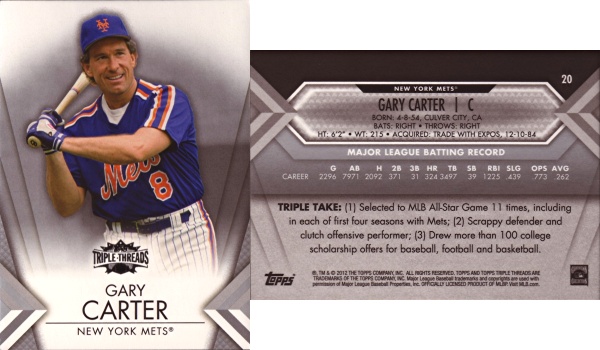
Serial Numbering: None-625-250-125-99-50-25-1-1-1-1-1-1
Mets: Gary Carter, Tom Seaver, David Wright
Non-Mets: Jose Reyes, Nolan Ryan, Willie Mays, Yogi Berra, Duke Snider, Rickey Henderson
Sadly, Topps did not drop the base cards from Triple Threads like they did for Tier 1. They seemed really excited to show off this design on Twitter. Am I missing something here? This is about as dull a design as you can get. Good thing these aren’t the main draw and only serve as filler along with their six parallels numbered to between 25 and 625, two parallels numbered to 1, and four printing plates per card. Three Mets out of 100 cards is about average, so whatever.
Rookies and Future Phenoms Autographed Relics

Serial Numbering: 99-75-50-25-10-1-1-1-1-1-1
Mets: Kirk Nieuwenhuis, Ike Davis
Non-Mets: None
As usual, Triple Threads includes a bunch of inserts as an extension of the base set. I do not know why they do this, probably just to make sure you can’t build a complete set that makes any sense. Serial numbering on these follows the 99 sequence, so that’s 265 total cards for those of you playing along at home, with cards numbered to 10 or less featuring patches if patches are available. Two of the 65 cards feature Mets, which is again about average. As with all of the “triple” relics in this product, there are exactly three pieces of material in each card regardless of how many holes are cut in the card placed over them. Putting 23 holes in a card does not mean that there are 23 pieces of material in the card! Why are people on eBay so stupid? Next thing you know, they’ll be calling every serial numbered card a 1/1 because every one is unique. Oh, wait, they already do that… Autographs on these cards are on the cards and not stickers, because Kirk Nieuwenhuis doesn’t sign stickers. Seriously, have you seen how many cards this kid signed this year? He’s at more than 1600 just counting serial numbered cards. I’m amazed he’s not on the DL from a hand injury.
Triple Threads Autographed Relics
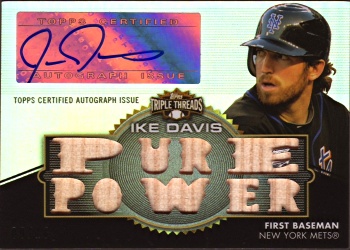
Serial Numbering: 18-9-3-1-1-1-1-1-1
Mets: Dave Kingman, Ike Davis (4), David Wright
Non-Mets: Tom Seaver, Willie Mays, Nolan Ryan, Duke Snider (2)
And here’s the gimmick that everyone (except me) loves, multiple variations of every card with stupid things written in the windows over the game-used material! Lumbering lefty? I guess it’s better than “send me an angel” or “heaven sent.” Whoever comes up with this stuff must have been fired from a greeting card company for being too cheesy. These follow the 36 numbering sequence minus the 36 and 27 for 36 total copies of each.
Triple Threads Relics / Relic Legends
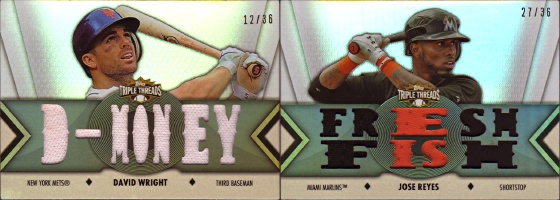
Serial Numbering: 36-27-18-9-3-1-1-1-1-1
Mets: David Wright (5)
Non-Mets: Jose Reyes (3), Rickey henderson, Eddie Murray, Willie Mays
If you need more Wright, just head over to the non-autographed Triple Threads Relics insert set, which features five more variants on the full 36 numbering scheme minus the wood 1/1 for 98 total copies of each stupid phrase. Among this year’s winners are “Wright Stuff” and “D-Money.” Jose Reyes on the other hand got tagged with “Fresh Fish.” As I’m sure Jay Sherman would say about this, it stinks.
Triple Threads Flashback Relics

Serial Numbering: 36-27-18-9-3-1-1-1-1-1
Mets: Johan Santana, Tom Seaver, Gary Carter, Dwight Gooden
Non-Mets: Rickey Henderson
Here’s an idea that’s so obvious that I can’t believe I haven’t seen it before: put windowing on both sides of a jersey card (Topps did something similar with several relic sets a decade ago by making the bottom layer transparent, but these are the first I’ve seen that are open on both sides). Two of these feature the Mets on the front and another two on the back. Of particular interest here is the Dwight Gooden card with sewn-in pinstripes visible from both sides. Numbering follows the 36 sequence we’ve been seeing on most of these non-autographed triple relics.
Unity Autographed Relics
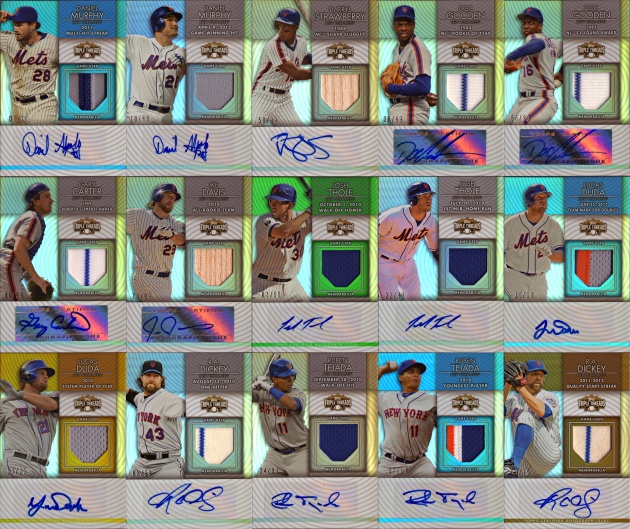
Serial Numbering: 99-75-50-25-10-1-1-1-1-1
Mets: Daniel Murphy (2), Ike Davis, Josh Thole (2), Lucas Duda (2), R.A. Dickey (2), Ruben Tejada (2), Darryl Strawberry, Dwight Gooden (2), Gary Carter.
Non-Mets: Duke Snider
OK, let’s cut the crap. The whole “triple” gimmick is nice and makes for interesting display pieces and once-in-a-lifetime pulls, but the bulk of the interesting cards in this product are in the Unity insert sets. While last year’s Unity inserts could be combined in groups of three to create a panorama of the team’s stadium (or a frankenstadium if you combine players from different teams), this year’s Unity design is completely generic. On the plus side, this is what Topps has been saving the bulk of the material from new players and players who haven’t been seen since last year for. So if you were wondering why Lucas Duda and Josh Thole have been getting the shaft for the bulk of the year, it was so Topps could make them the big draw in this insert set. Well, that and Dickey pants. Double Dickey pants. Fresh off Dickey’s second consecutive one-hitter this year, stains and all. This may be the only game-used item whose authenticity has not been called into question by the recent counterfeit merchandise scandals.
Each card lists a specific accomplishment for the depicted player, with some players featured on multiple cards. Accomplishments include a mix of awards, events, and on-field performances. All autographs are on stickers and numbering follows the 99 sequence minus wood. That’s right, there’s no Dickey wood parallel. Deal with it.
Unity Relics
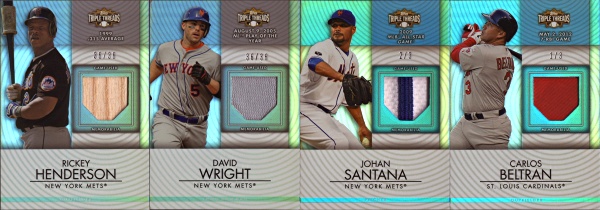
Serial Numbering: 36-27-18-9-3-1-1-1-1-1
Mets: Rickey Henderson (3), David Wright (3), Johan Santana (3), Daniel Murphy
Non-Mets: Willie Mays, Warren Spahn, Carlos Beltran (3), Eddie Murray (2).
For players without a ready supply of sticker autographs, there’s the non-autographed variety of Unity. These follow the 36 numbering sequence (without wood, like the autographed variety), making them harder to find than their autographed brethren (particularly when it comes to patches, which are at the 3 or less parallels as opposed to 10 or less for the autographed versions).
2011 All-Star Workout Jerseys
Heath Bell, Carlos Beltran, and Jose Reyes appear here with various pieces of their 2011 All-Star workout jerseys. Base patch cards are numbered to 9 or less, all others are numbered to 1. They’re nice, I guess.
Multiple Player Cards, Booklets, Oddballs, and Other Assorted Rarities
There are a bunch of them. I don’t care about any of this stuff though and most of it is out of my price range, terribly boring, or both. Go somewhere else if you want an unbiased review, or just look at the pre-launch tweets from Topps for some of the many cards you will never own. This is the only reason to open boxes of this stuff, which I don’t do. These cards might as well not exist.
Bottom Line
While I may not care for the card design, Triple Threads never fails to deliver new material. Mets with their first MLB uniform material include R.A. Dickey, Kirk Nieuwenhuis, Daniel Murphy, Ruben Tejada, and Lucas Duda. Tejada and Josh Thole have their first blue jerseys in this product and Dickey has the first Mets pinstripe material since the change to cream/ivory base material in 2010 (and on top of that it’s from the pants he wore during his second consecutive one-hitter this year). Dwight Gooden has the first Mets sewn-in pinstripes visible from both sides. And Nieuwenhuis’s black jersey swatches can only be from the jersey he wore on June 3 to honor John Franco.
Players who recently changed teams haven’t been left out either. Carlos Beltran, fresh off having pieces of a Giants uniform in Museum Collection, has his first Cardinals patch cards in Triple Threads. While these are all numbered to 3 or 1, there are three different cards for a total of 12 patch cards. Yeah, that’s still not very many. More common though are pieces from Jose Reyes’s spring training jersey, which Topps tweeted a picture of back in the spring. Material available for Reyes in his various cards includes black, black mesh, and orange mesh fabric swatches as well as some patches numbered to 10 and 1.
And then there’s the retired players who are shown on other teams on cards featuring pieces of Mets uniforms… Rickey Henderson and Eddie Murray have some beautiful big Mets patch cards that show them in other teams’ uniforms. They’re way out of my price range in any case, but it bugs me to see such great cards marred by showing the player in the wrong uniform.
Still, it’s hard to get too excited about this product. Triple Threads has a lot of stuff, but none of it really stands out. It doesn’t have the on-card autographs of Tier One or Five Star, the attainable jumbo relics of Five Star or Museum Collection, or the card design of Bowman, Finest, or Museum Collection. But I suspect that I might be just a bit biased. Player selection is this product’s real strength, but even that just makes it a placeholder for many players until something better comes along.
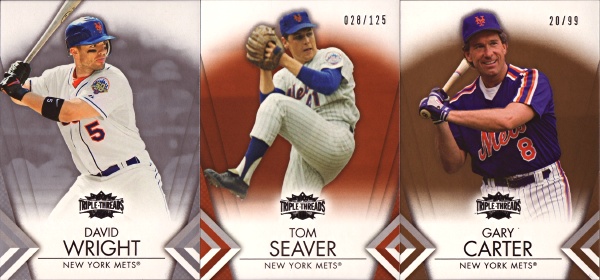
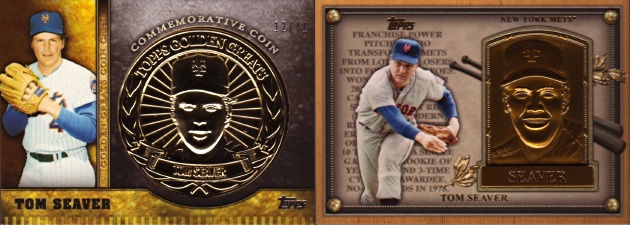
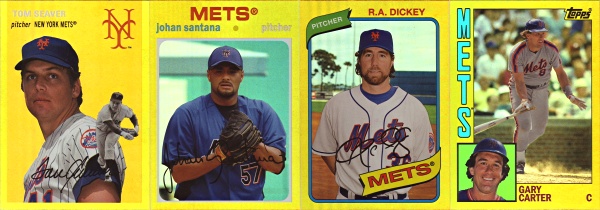
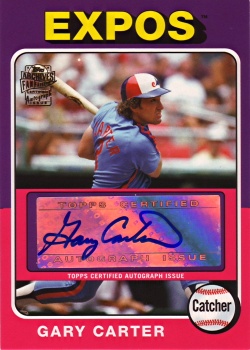
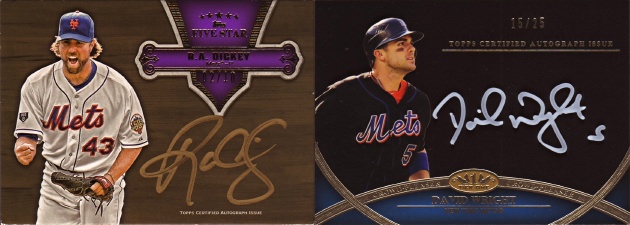
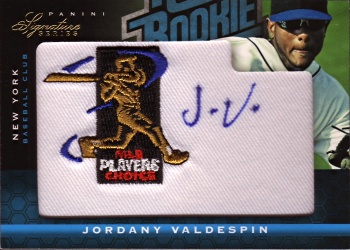
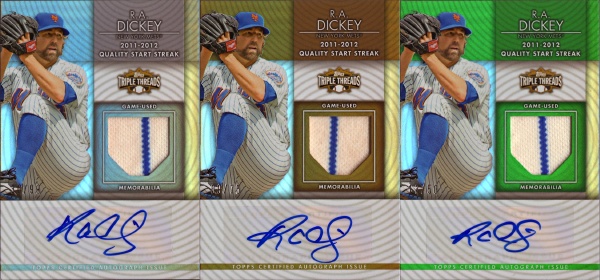
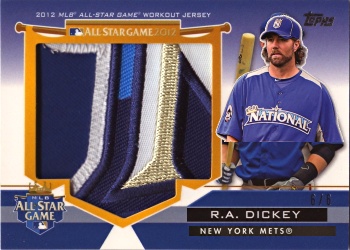
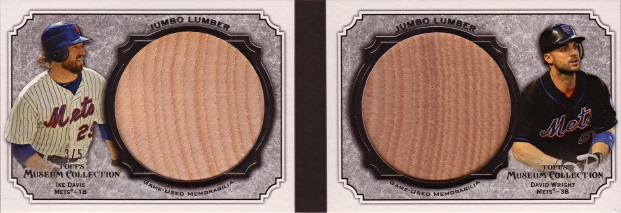
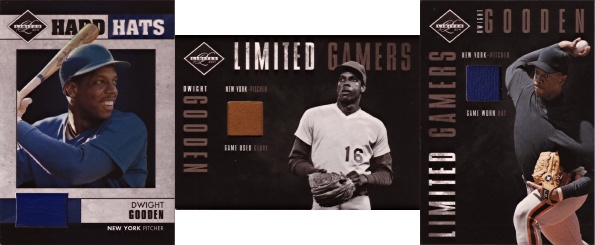
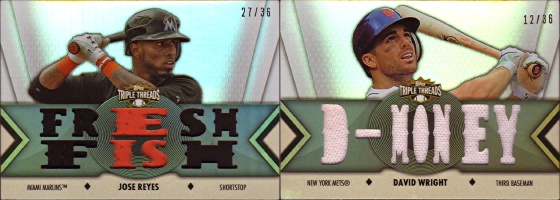
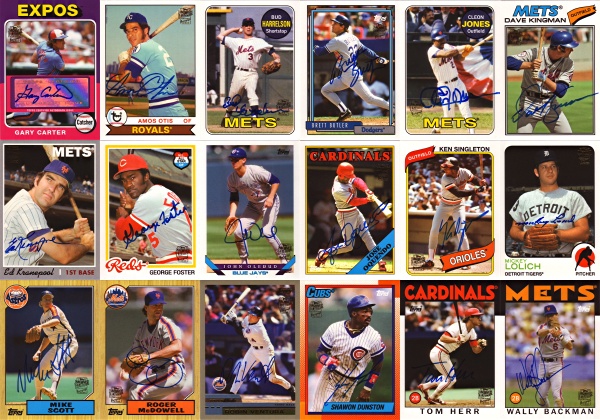
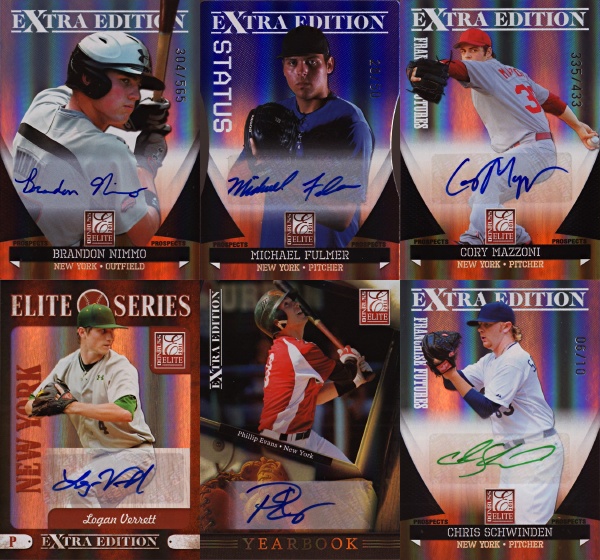
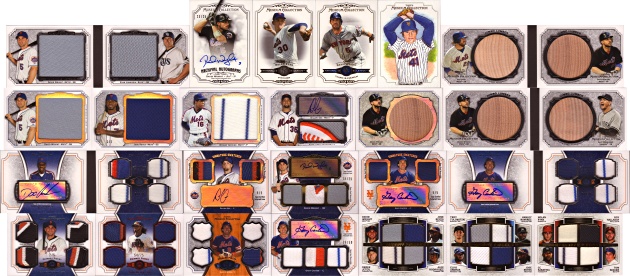
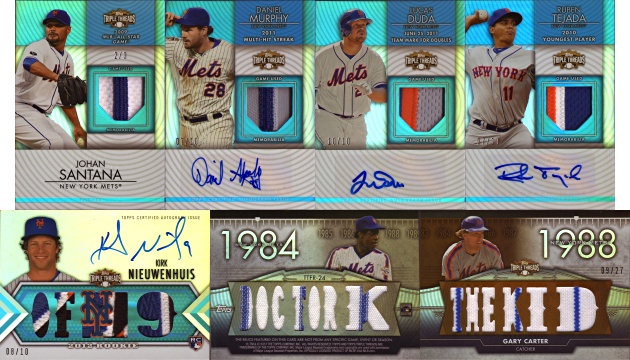
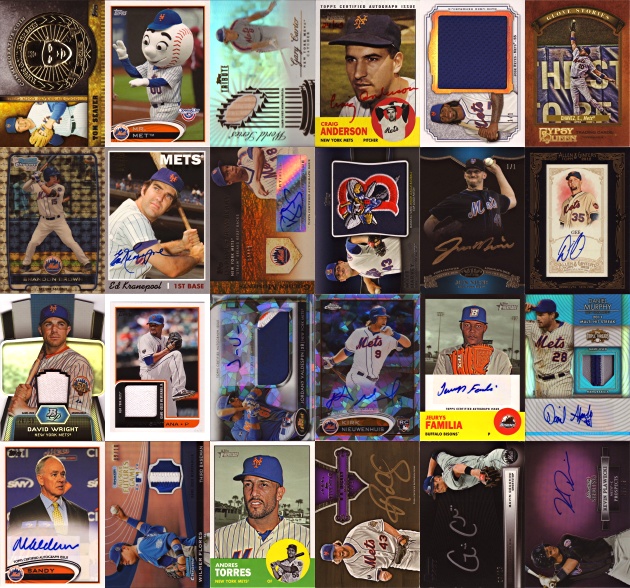
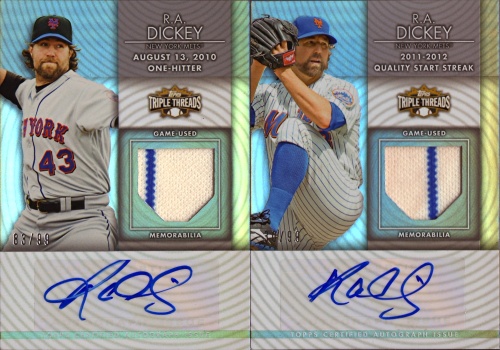
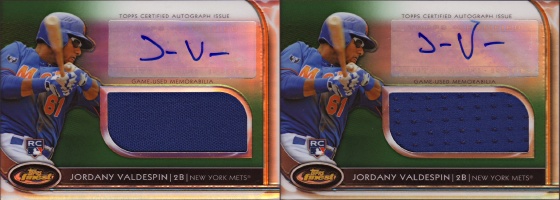
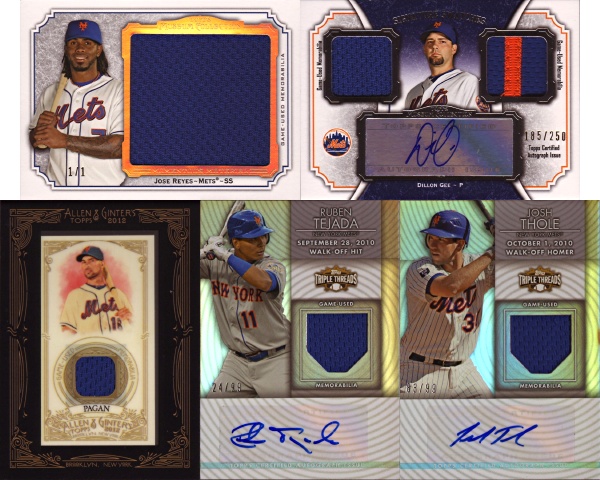
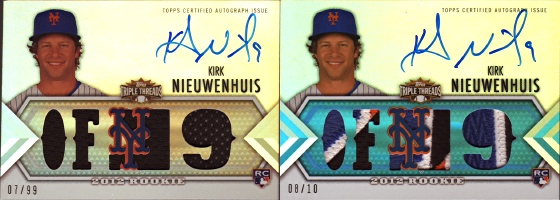
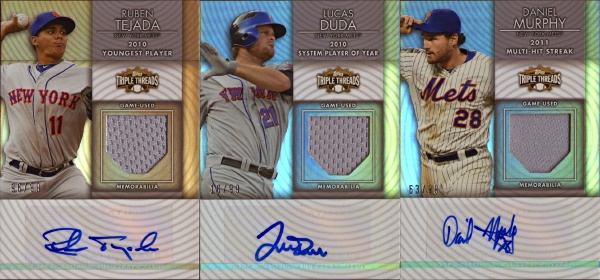
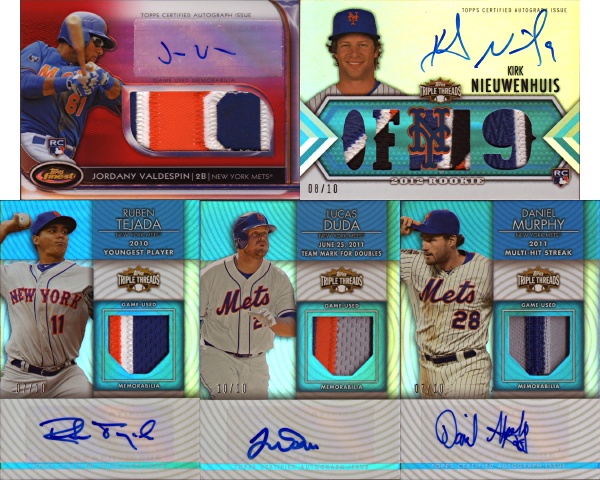
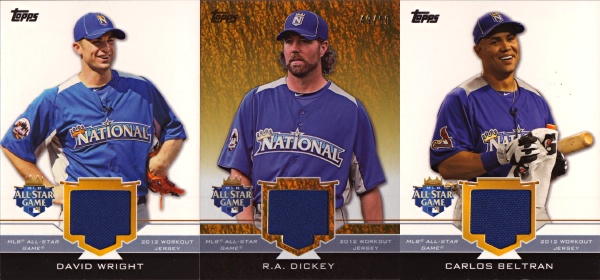
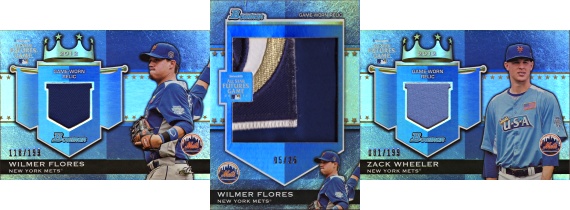
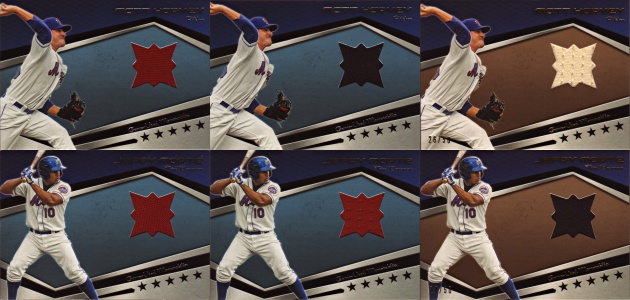
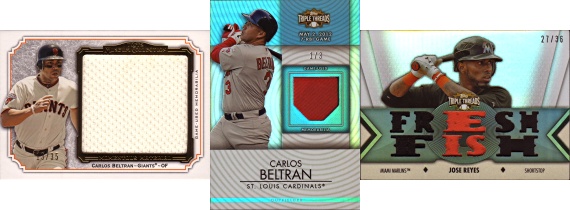
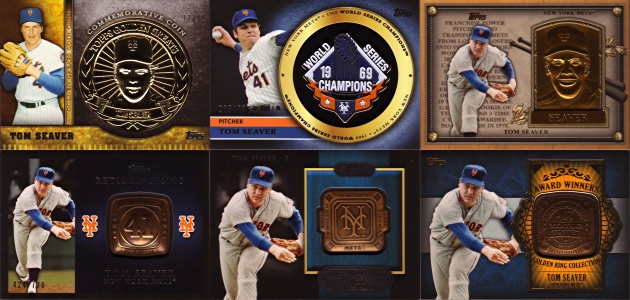
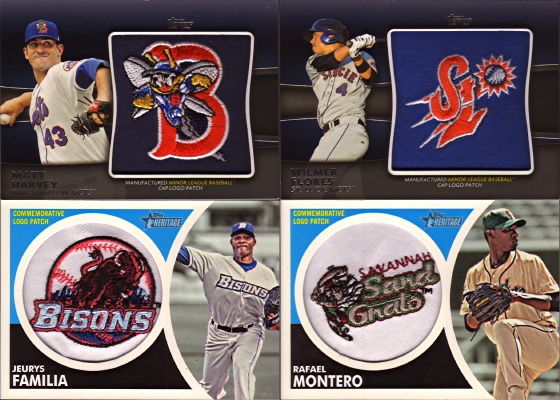

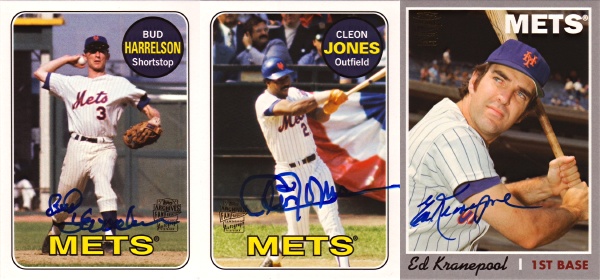
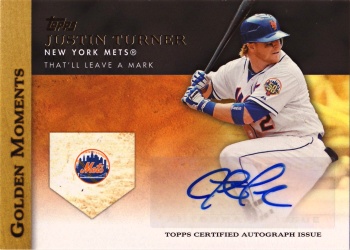
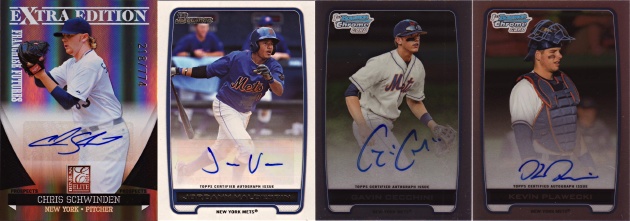
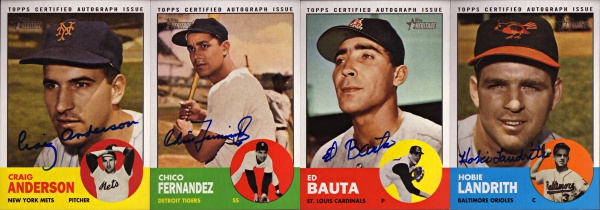
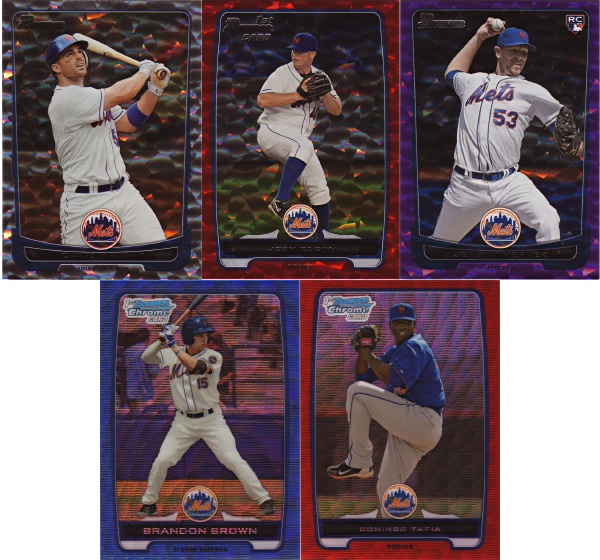
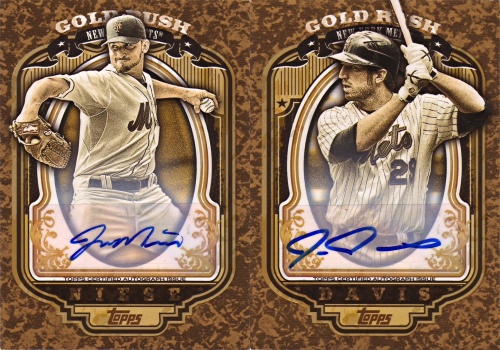
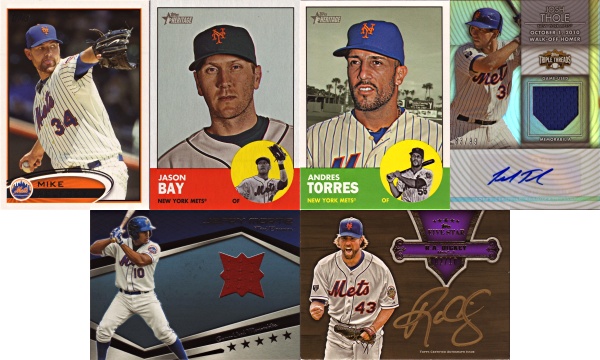
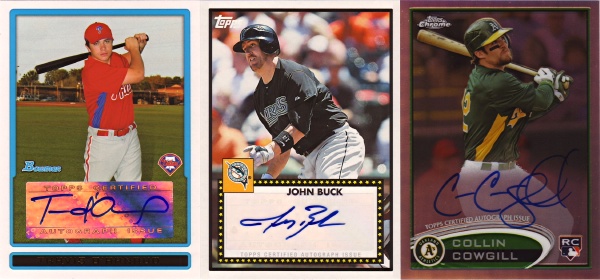
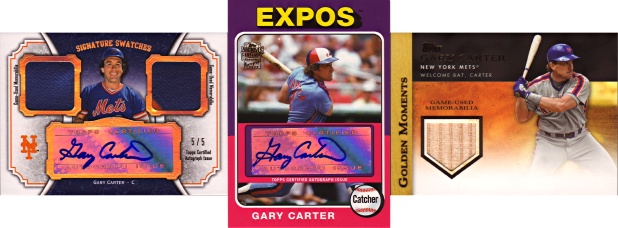
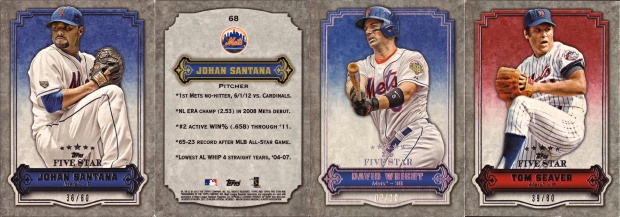
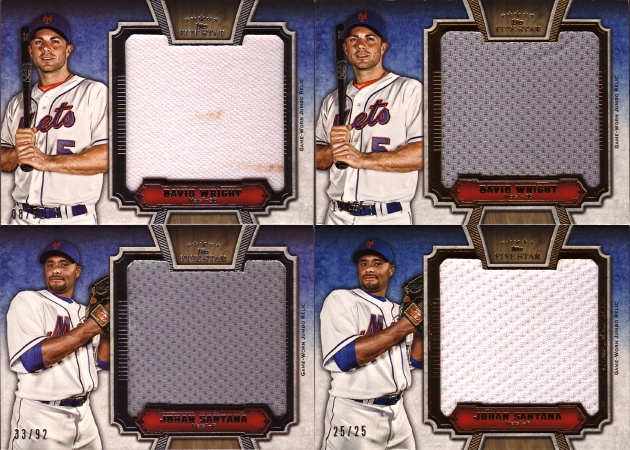
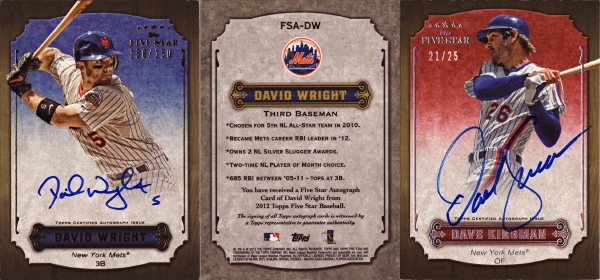
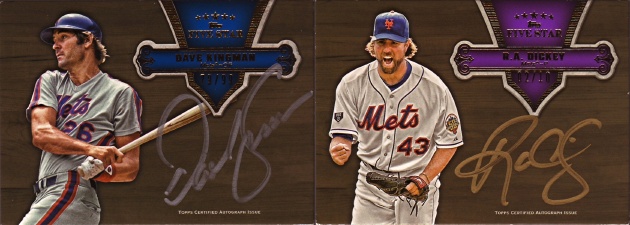


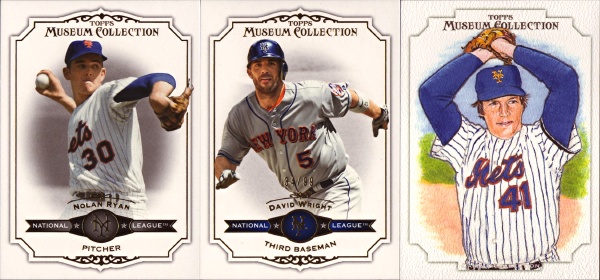
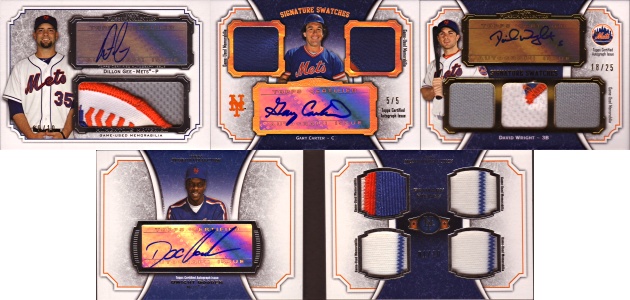

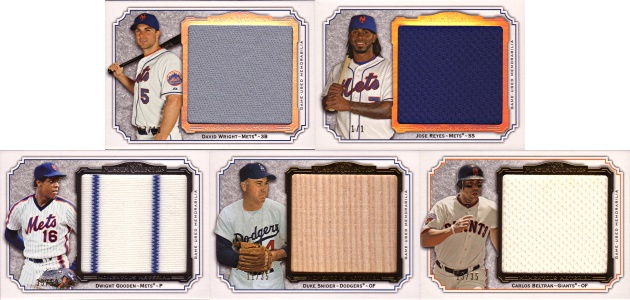
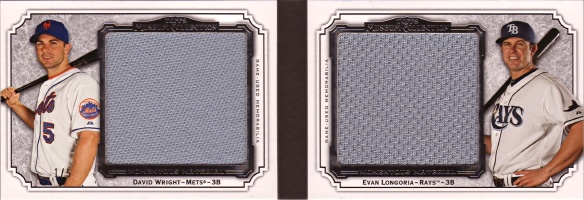




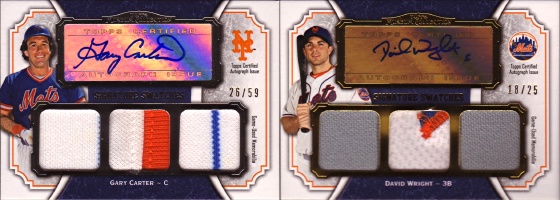
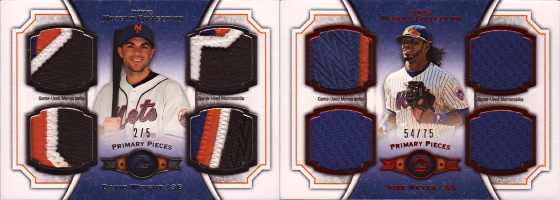



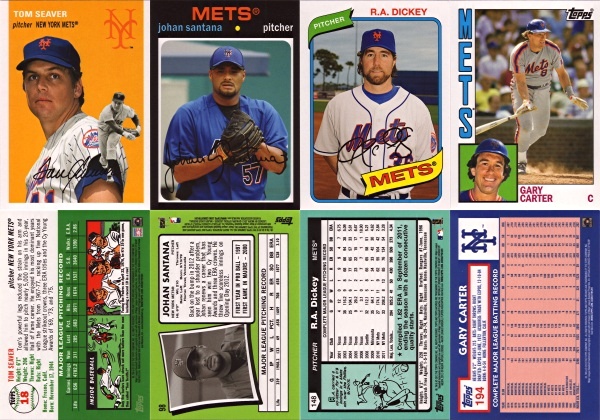
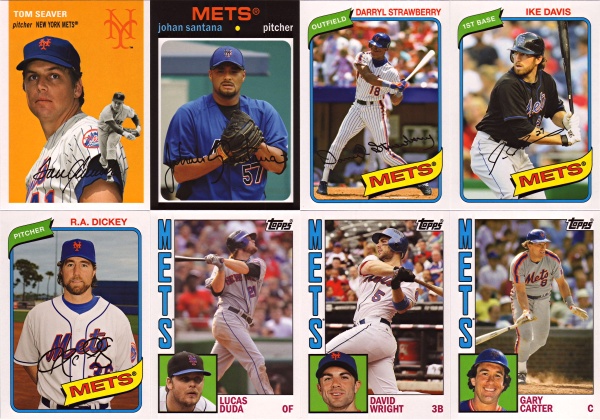
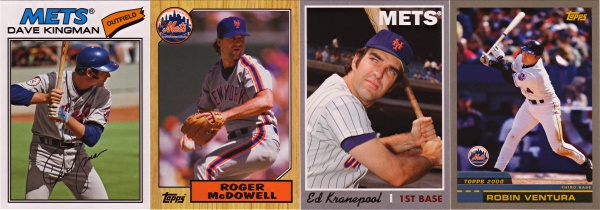
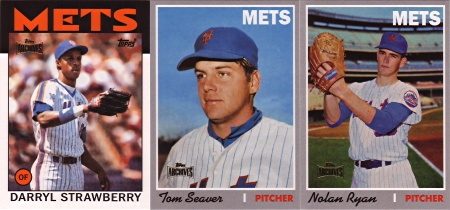
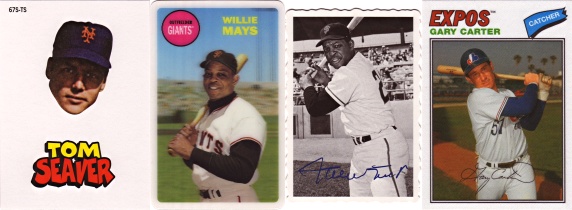
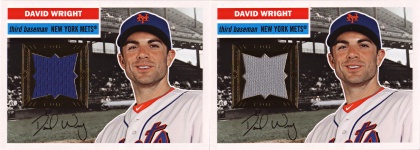
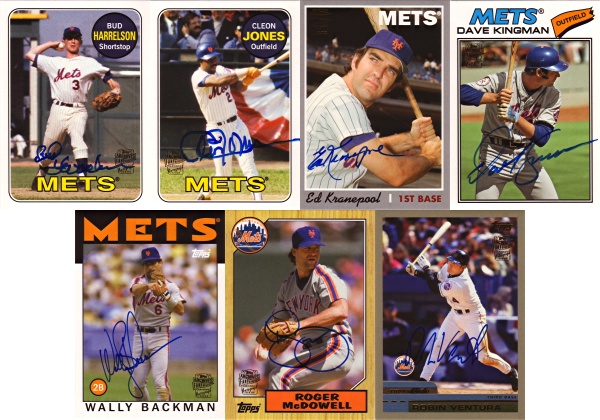
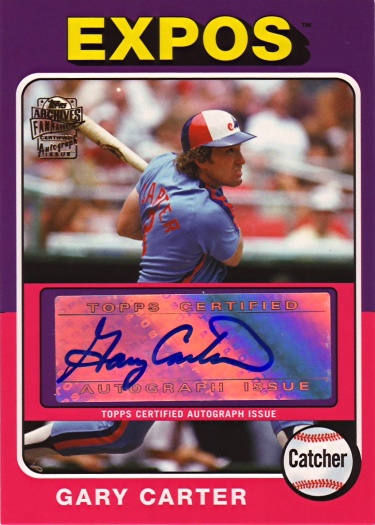

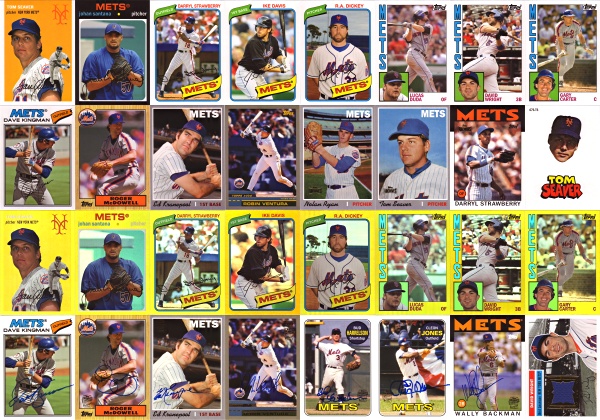
Recent Comments